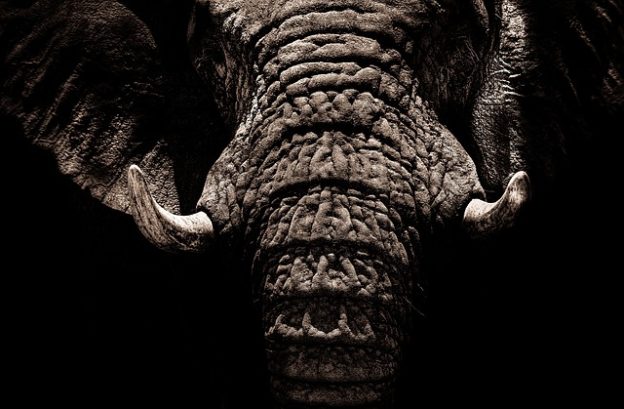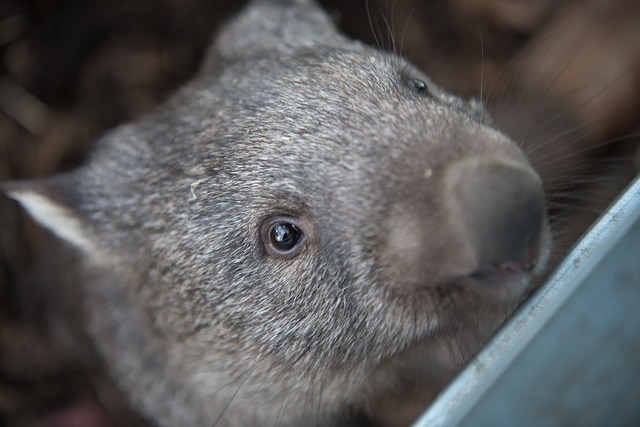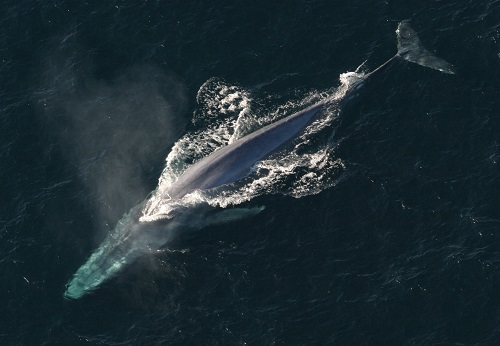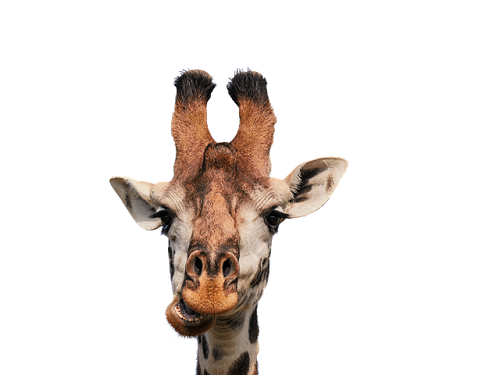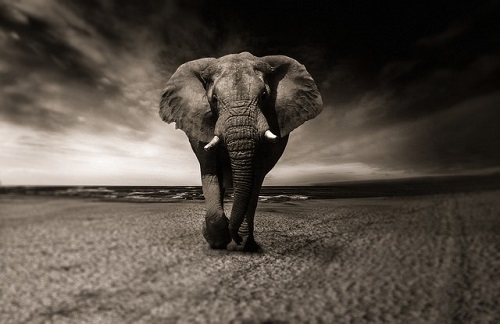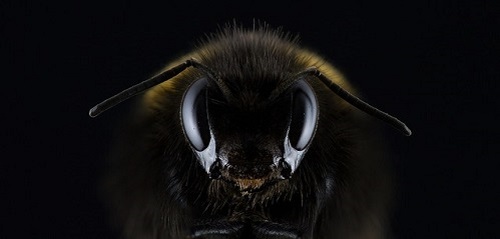What Are Some Creatures With Interesting Features?
The Wombat
Wombats are marsupials, which means that they have a pouch. These furry little guys live Down Under with a variety of other unusual creatures in Australia’s Animal Kingdom.
So, what makes a wombat so unique? Let’s see…
Their Pouch Faces Backwards
Their pouch faces backwards, which means that their young face the rear instead of the front. Wombat bodies lay low to the ground; therefore, a rear facing pouch provides the joey with extra protection as she walks. Furthermore, this positioning allows the mother wombat to dig without concerns related to scooping dirt up into her pouch.
They Dig and Dig, and Dig
Wombats have long claws and strong feet that are specifically designed to dig. These characteristics allow the wombat to clear as much as three feet of dirt each night. They create underground tunnels stretching up to 650 feet.
Cube-Shaped Droppings
Even though it takes about two weeks for the wombat to digest a single meal, they drop around 100 of these neatly wrapped packages every night. They use their feces to mark their territory: In addition, since they use their sense of smell for navigation purposes as they travel about in the dark of the night, marking also helps them find their way home.
They Want Their Droppings to Be Seen
Whereas, the majority of animals simply do their business in the dirt, wombats are a bit more creative: They like to leave their droppings on top of logs and rocks. It is their unique cube shape that keeps their droppings from rolling onto the ground.
Their Derrière is Made of Steel – Well, Cartilage – But You Get the Idea
Since the wombat’s rump consists mostly of cartilage, it acts as a barrier to the scratches and bites of a predator during a chase. Once the wombat finally arrives at his burrow, he dives inside and uses his powerful behind to block the entrance, making it impossible for the predator to enter. On another note, their backs are so strong that they can crush the skull of an intruder by pushing it against the roof of the burrow: Talk about a headache!
Don’t Underestimate That Waddling Wombat
While a wombat may not be the most agile-looking animal on the planet, if threatened, that chunky body and those stumpy legs do not hold him back: Believe it or not, a wombat can sprint 25 miles per hour for up to 90 seconds at a time!
The Blue Whale
The blue whale is the largest animal that ever existed, in or out of the ocean. These beautiful mammals can weigh up to 200 tons and have a length of 80 to 105 feet: For reference purposes, a blue whale’s size can be compared to that of a bus. These magnificent ocean dwellers live from 80 to 90 years (in the wild) and eat up to 8 tons of krill (small crustaceans that are very similar to shrimp) each day.
While all the facts listed above are amazing, here are a few more:
An Enormous-Sized Heart
The blue whale’s heart can weigh as much as a car.
Despite Being the Largest Animal to Ever Live, It’s a Pretty Fast Swimmer
If necessary, they can swim up to 20 miles per hour; however, unless there is a problem, they typically swim at a casual speed of 5 miles per hour.
The Loudest Animal on Earth
These are among the loudest animals on earth, emitting a series of groans, low-frequency pulses and moans. Scientists believe that in ideal conditions one blue whale can hear another blue whale from 1,000 miles away.
It Has a Huge Tongue
The tongue of the blue whale can weigh as much as an elephant.
An Exceptional Calf, Right from the Start
Since blue whales are mammals, they have live births. After spending about a year in the mother’s womb, the calf emerges. This baby whale can weigh as much as 3 tons and have a length of 25 feet; thus, making it rank among some of the largest animals on earth. Initially, the calf eats nothing but its mother’s milk, gaining approximately 200 pounds a day for its first year of life.
The Hippopotamus
Hippopotamuses like nothing more than to be submerged in water. For this reason, the Greeks called them the ‘river horses.’ The hippopotamus submerges itself for up to 16 hours a day to avoid the blazing heat of the African sun.Here are some weird facts about the ‘river horse:’
Graceful Swimmers
Despite their size, hippos are graceful swimmers; however, many choose to stand or walk on the floor of the lake. They have plenty of time to walk around since they can hold their breath for up to 5 minutes.
Here Comes Baby
Hippos give birth in water and a calf can actually suckle underwater by closing its ears and nostrils.
Good Eaters
Once night falls, the hippopotamus travels inland to graze. One hippo can consume 80-150 pounds of grass each night. Who needs a lawnmower, when you can get a hippopotamus?
They Sweat Blood…No, Not Really
While basking in the sun, a hippopotamus secretes an oily, red substance. These secretions moisten the skin and protect it from the rays beaming down from the sun. In addition, it is believed that this oily substance plays a role in protecting the hippopotamus from germs. The secretion of this red substance led to the myth that ‘hippos sweat blood.’
The Most Dangerous Animal in Africa
While a hippo may look cute and cuddly, the hippopotamus is considered the most dangerous animal in Africa. Hippopotamus are responsible for more human deaths than any of the other large animals on the continent.
The Giraffe
With their overall height ranging from 14 to 19 feet, the giraffe is the world’s tallest mammal. On average, the length of a giraffe’s leg measures about 6 feet. Even with these long, thin legs, a giraffe can comfortably run for a long period of time at about 10 miles an hour and, when necessary, at 35 miles an hour for a shorter distance. Their life span is about 25 years (in the wild).Weird facts about the giraffe:
Has an Extremely Long Tongue: But There’s a Reason
The giraffe’s tongue is 18- to 21-inches long. This length allows the giraffe to reach between the enormous thorns (referred to as Devil Thorns’ in Africa) of the acacia tree. In addition, it uses its tongue to clean its ears.
Their Tongues are Black
Whereas, the bottom of the giraffe’s tongue is pink, the top is black. Melanin is responsible for turning the tongue black. Since a giraffe eats almost constantly, the melanin protects the giraffe’s tongue from the sun.
A Giraffe Only Drinks Water Every Few Days
Despite living in an extremely hot climate, giraffes do not drink water everyday; instead, they get most of their water from the plants that they eat. This is beneficial because drinking from a water hole can be a dangerous venture for this tall, lanky creature.
Giraffes Take a Unique Approach to Mating
A male giraffe determines if a female is ready to mate by tasting her urine. If he tastes hormones, the mating ritual can begin.
They Rarely Lie Down and Even Give Birth While Standing
Giraffes rarely lie down and even sleep standing up. They also stand while giving birth, which means that after spending more than a year in its mother’s womb, once the calf finally escapes, it falls head first for more than 5 feet before hitting the rock-solid ground. Welcome to the world little guy! Did you know that giraffes are the only animals born with horns?
Age is Determined by Its Spots
The age of a tree is ascertained by counting the number of rings it has inside, the age of a giraffe can be determined by the hue of its spots: Darker spots are seen on older giraffes. Another interesting fact is that just like fingerprints and snowflakes, no two giraffes have the same spot pattern!
A Giraffe Only Has 7 Vertebrae in Its Neck
Despite the length of the giraffe’s neck, it has the same number of vertebrae as a human; however, a giraffe’s vertebrae can be 10 inches long!
Elephants
Elephants are considered one of the most intelligent animals on earth. It is believed that their intelligence stems from the fact that the neocortex portion of their brain is highly convoluted, which makes it similar to the brains of humans and apes. It has recently been discovered that some African elephants may warn one another about the presence of humans with a specific ‘word.’ They accomplish this by manipulating their vocal tract. They also have a ‘word’ to warn one another about the presence of bees.
Here are a few more interesting and weird facts about the elephant:
Elephants Can Learn
An elephant can learn new facts, mimic sounds, participate in artistic activities, learn new behaviors and use tools.
Elephants Fear Bees
Elephants are afraid of bees (not of mice); hence, their need to verbally warn their herd as a bee approaches.
They Show Emotion
They display a range of emotions similar to those of a human. These emotions include joy and playfulness as well as grief, and mourning. In addition, elephants display compassion and self-awareness: For example, a baby elephant will suck on its trunk to comfort itself.
They Have Rhythm
On average, elephants keep a better beat than a human does.
A Connection Between Coffee and Elephant Dung?
One of the world’s most expensive brands of coffee (Black Ivory Coffee) is made from coffee beans found in the dung of Thai elephants.
The Honey Bee
About one-third of the food we eat in America is connected to honey bee pollination. Some of the crops that honey bees help pollinate include melons, cherries, cucumbers, pears, avocados, cranberries, plums, prunes, kiwi, apricots and blueberries. Now that the importance of the honey bee has been established, we can take a look at some of their weird characteristics.
Weird characteristics of the honeybee:
They Aren’t Afraid to Butt Heads
When a honey bee continues to dance showing favor for an unpopular nesting site, other members of the colony will headbutt her. This headbutting helps the colony reach a consensus. Maybe this practice should be implemented in the House and the Senate…
Understanding the Colony’s Social Structure
Each hive has three types of colony members, the queen, the drone and the worker:
The queen – a fertile female who is mother to all the honeybees within her entire colony. All she does is reproduce, laying up to 3,000 eggs each day. However, since the queen mates with up to 100 males in just a few hours, she is susceptible to contracting a sexually transmitted disease (in the form of parasites).
The drone – his only purpose is to mate with a virgin queen; however, only one of a thousand have the chance to mate.
The worker – this poor bee is an infertile female responsible for performing all the laborious tasks of the colony. Tasks include guarding the hive, food preparation, maintaining a comfortable temperature throughout the hive (heating and cooling), feeding the queens, the brood as well as the drones. Sadly, during the summer months, a worker bee only lives from 6 to 8 weeks with the most common reason for her death being a wearing out of her wings. This is understandable when you consider that a honeybee flaps her wings 200 times per second and, during her lifetime, a worker bee flies the equivalent of 1 ½ times the circumference of the earth.
The Pig
For an omnivore like me, pigs provide some of the most delicious meats available, including bacon, ham and pork chops (aka the other white meat). However, the next time I grab a piece of bacon or slice of ham, I may need to think twice now that I know how intelligent pigs truly are.Pigs are smarter than you think:
They are as Smart as a Dog
Believe it or not, pigs are about as intelligent as a dog, a monkey and a dolphin.
Pigs Can Learn and Recognize Emotion
A pig can be taught how to navigate a maze and learn symbolic languages. In addition, they can recognize the emotions of other pigs.
They Cannot Sweat, But Found a Solution
So, if pigs are so smart, why do they roll around in the mud and their own feces? Because they cannot sweat, they roll around as a way to stay cool on hot summer days.
Final Thoughts
This was a fun piece to write. However, it did make me think: All animals should be cherished. Since some of the animals on this list are endangered or vulnerable, I started to think about the fact that Chinese scientists have just successfully cloned macaques. Could cloning be the answer to replenishing the earth with the animals we lost and those that we are about to lose?
Although cloning is a very complicated and concerning topic, if we had the ability to clone the animals that are extinct, should we? In my opinion, it should be considered: Especially since it is our fault that many of these animals are extinct in the first place.
However, in closing, I think we have all learned from the “Jurassic Park” movies that cloning dinosaurs (and other creatures with the potential to destroy mankind) should never even be considered.
Similar Content: https://odditiesbizarre.com/deformed-animals/
Sources:
https://lowvelder.co.za/245166/10-dangerous-animals-africa/
https://www.mnn.com/earth-matters/animals/blogs/36-random-animal-facts-that-may-surprise-you
https://www.buzzfeed.com/samstryker/insane-facts-that-will-change-the-way-you-look-at-the-ani?utm_term=.iq52G1Kqb#.gbmkVm34Y
https://www.mnn.com/earth-matters/animals/blogs/elephants-may-have-a-specific-alarm-call-for-human
https://www.popsci.com/giraffe-reproduction-birth-live-stream#page-5
https://en.wikipedia.org/wiki/Krill
https://www.africansafaris.com/acacias-v-giraffes-a-uniquely-african-tussle/
http://mentalfloss.com/article/52381/it-true-elephants-never-forget
http://www.elephantsforever.co.za/elephant-intelligence.html
http://mentalfloss.com/article/65937/honey-bees-get-stds-too
Interesting Videos:
Interesting Reads:
https://www.worldwildlife.org/species/directory?direction=desc&sort=extinction_status
https://www.huffingtonpost.com/2013/10/22/11-extinct-animals_n_4078988.html
https://list25.com/25-extinct-animals-that-scientists-want-to-de-extinct/

